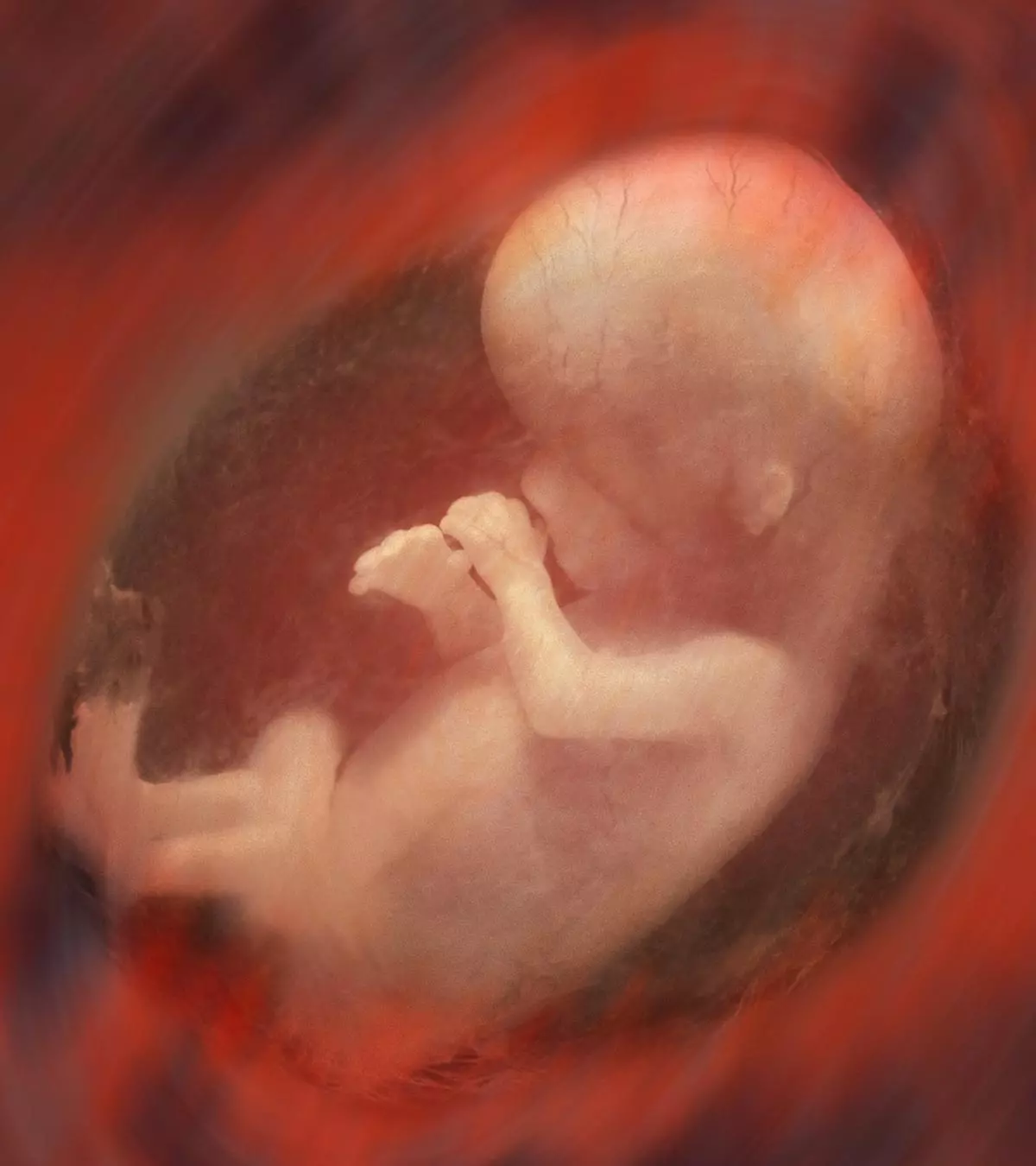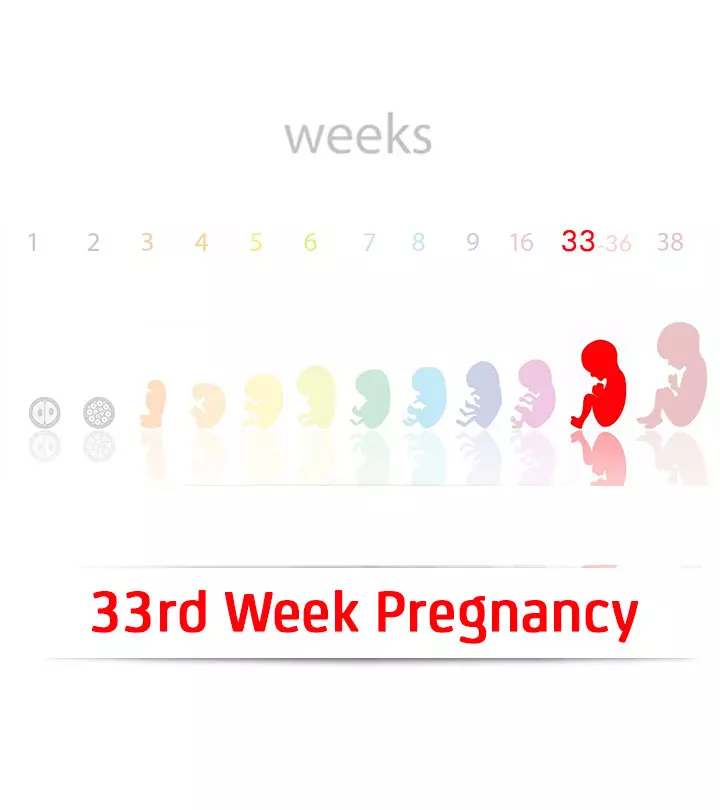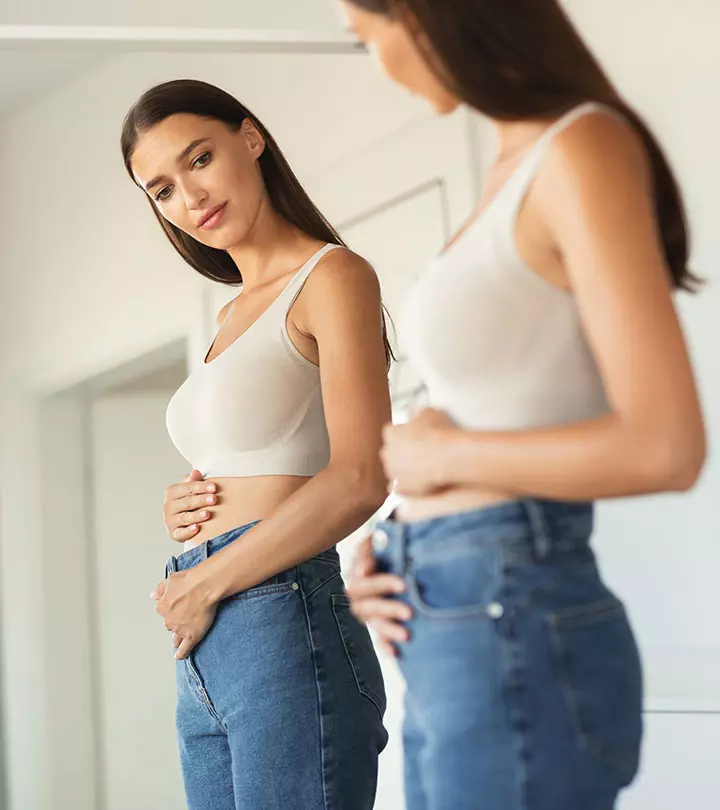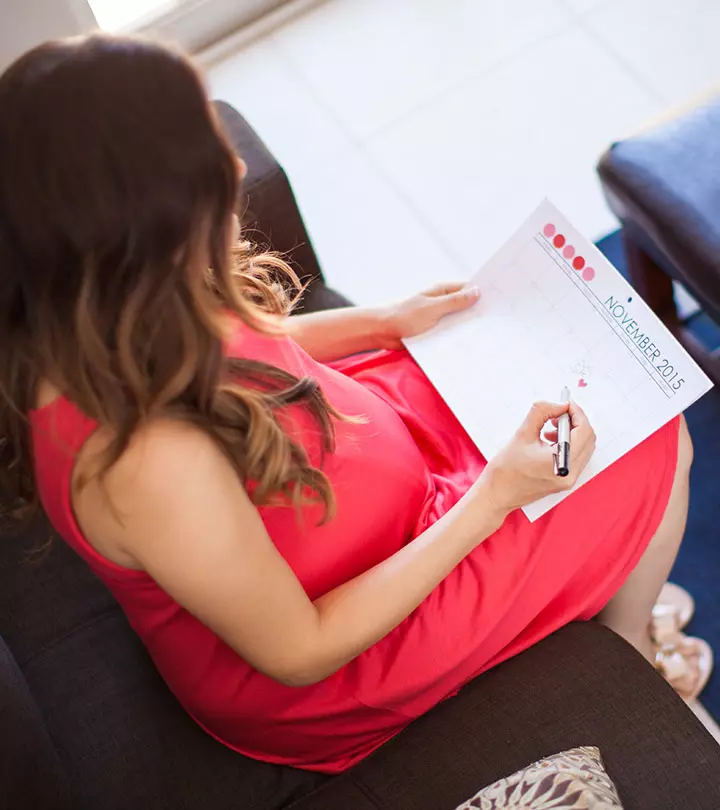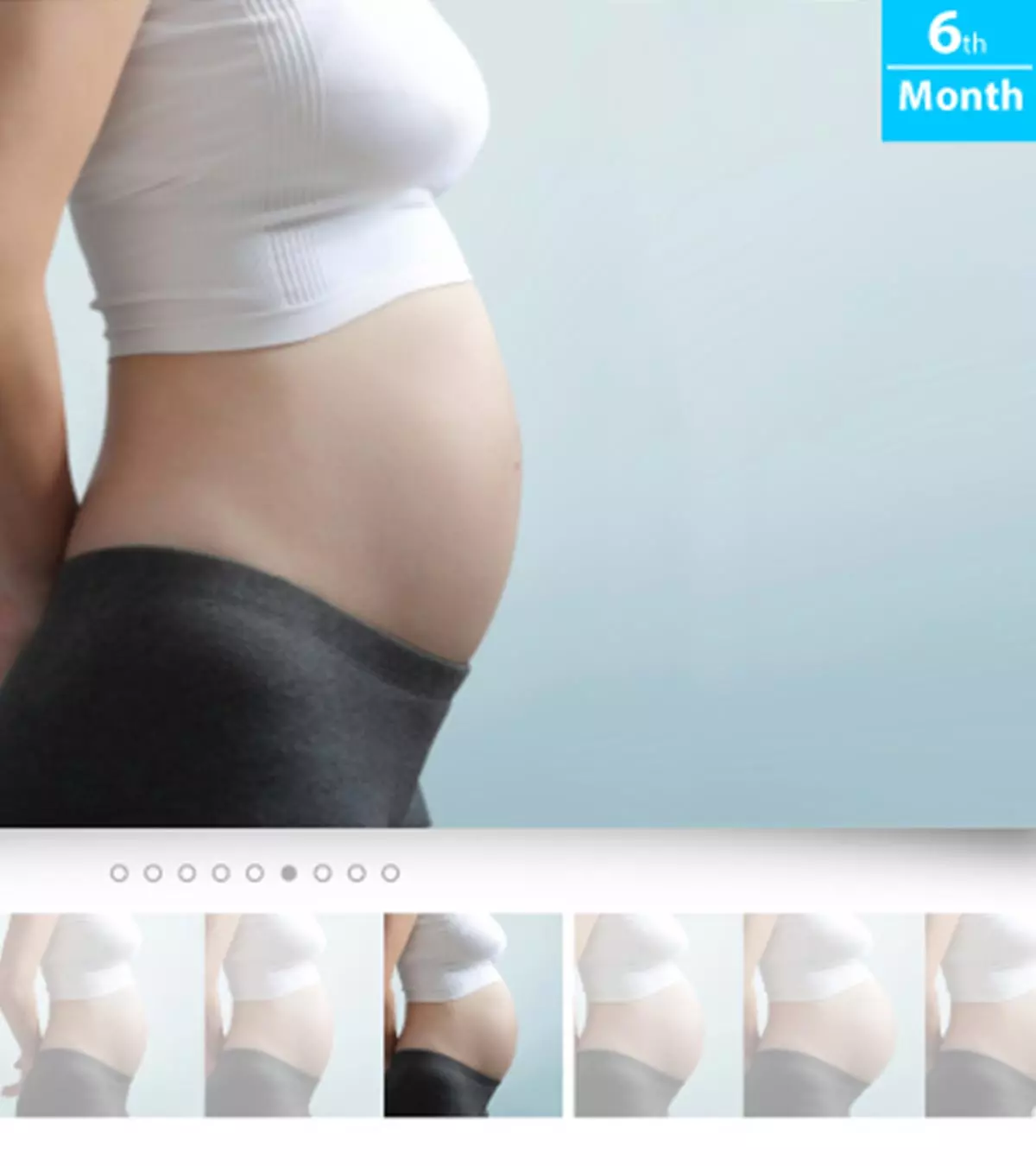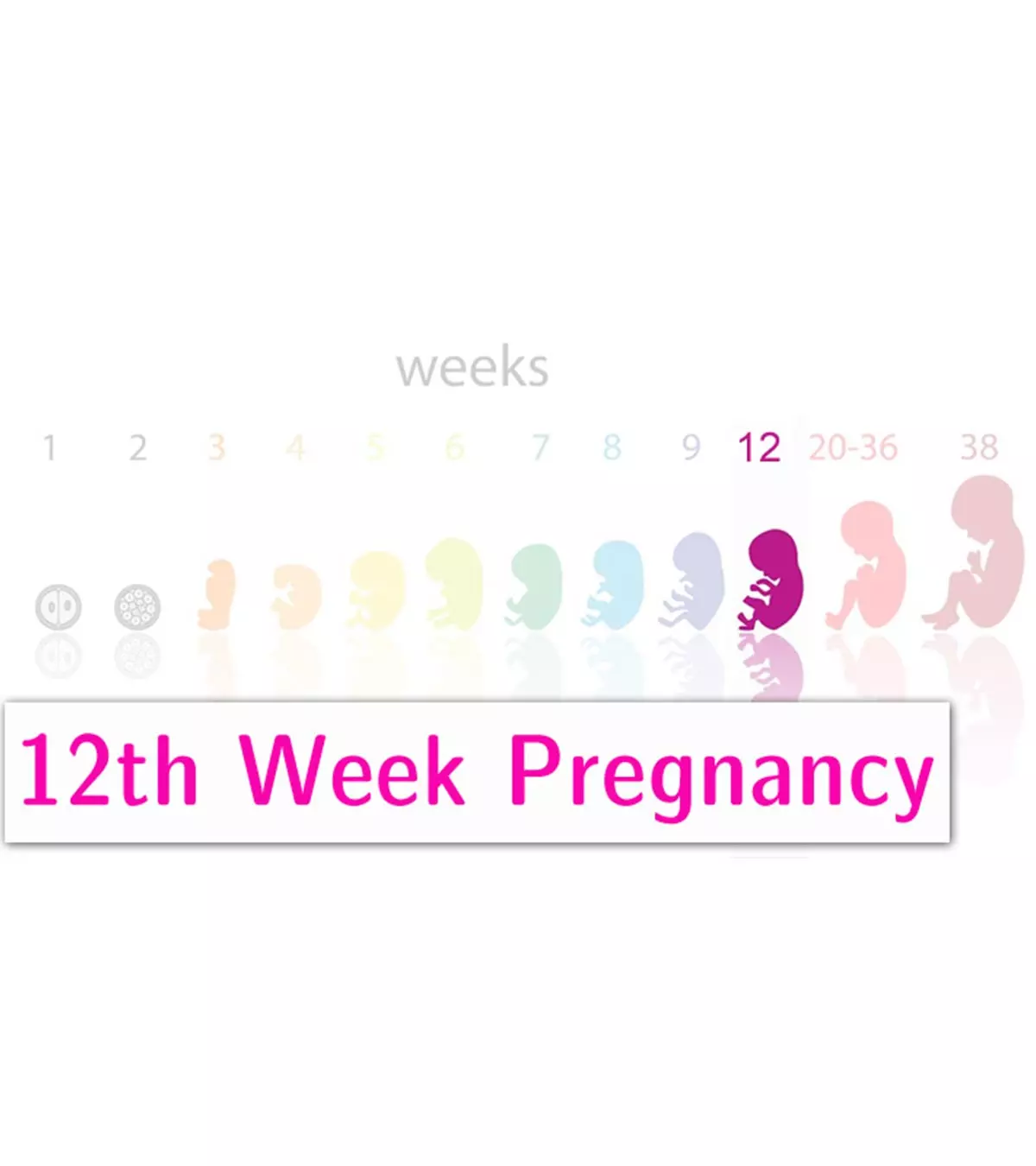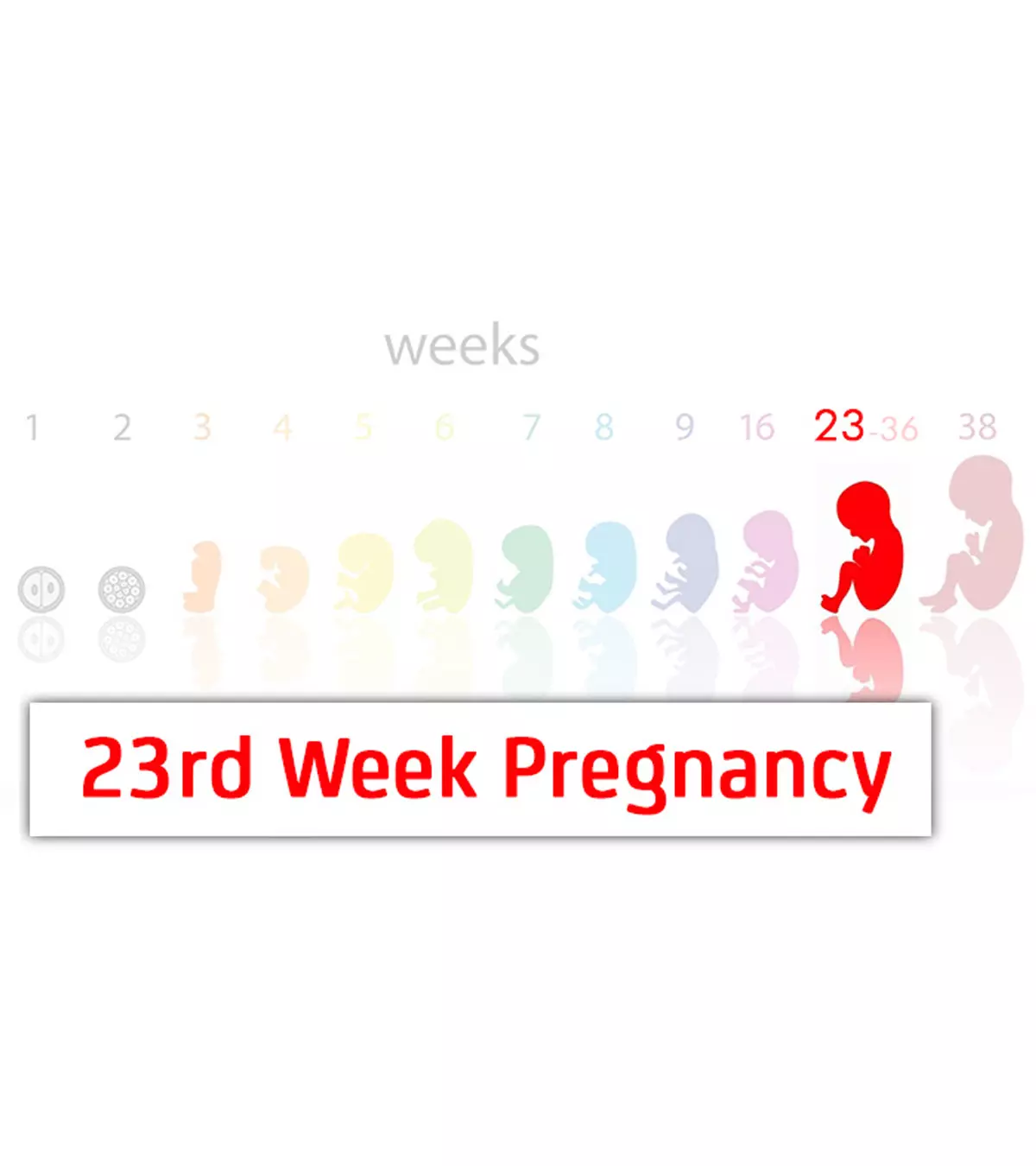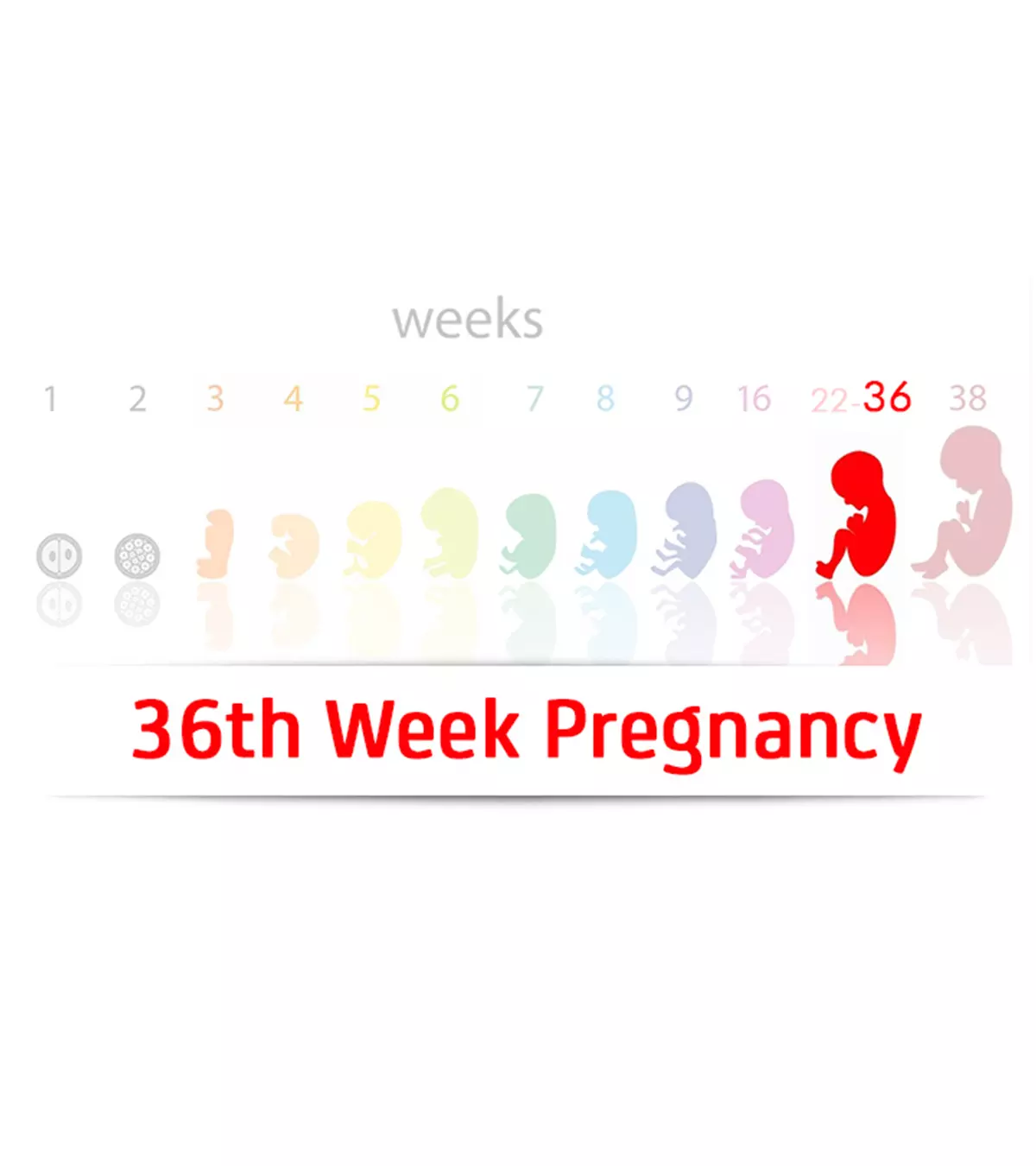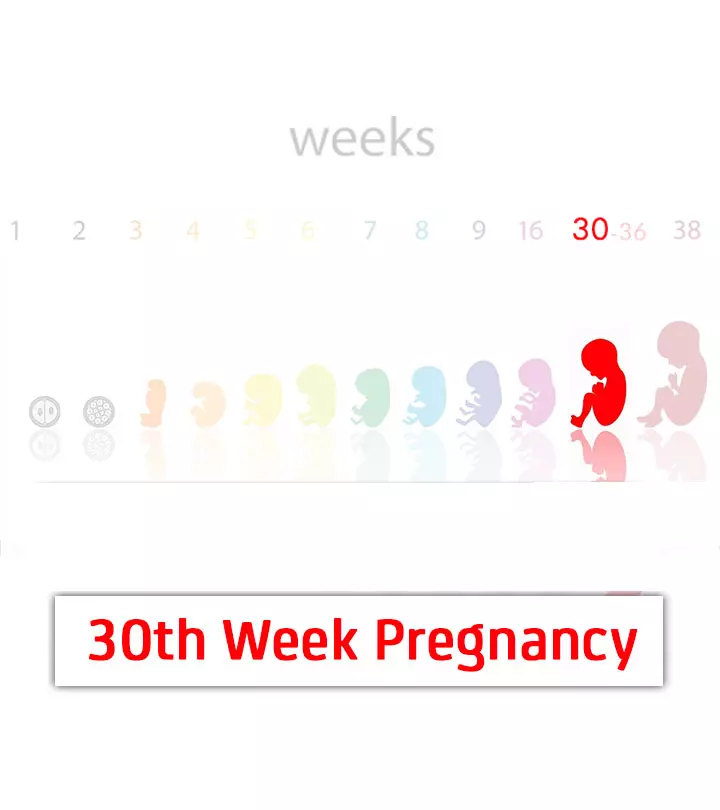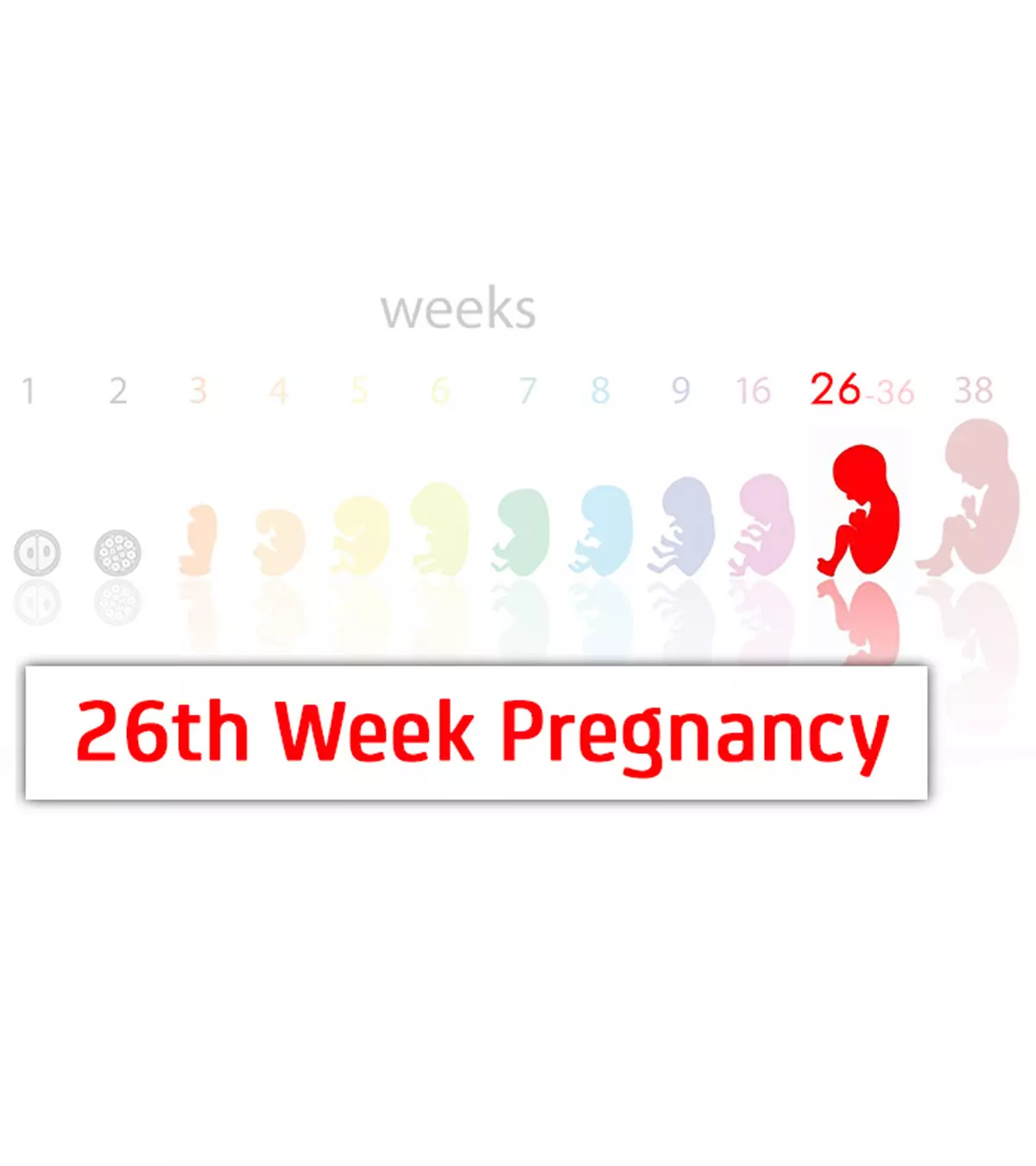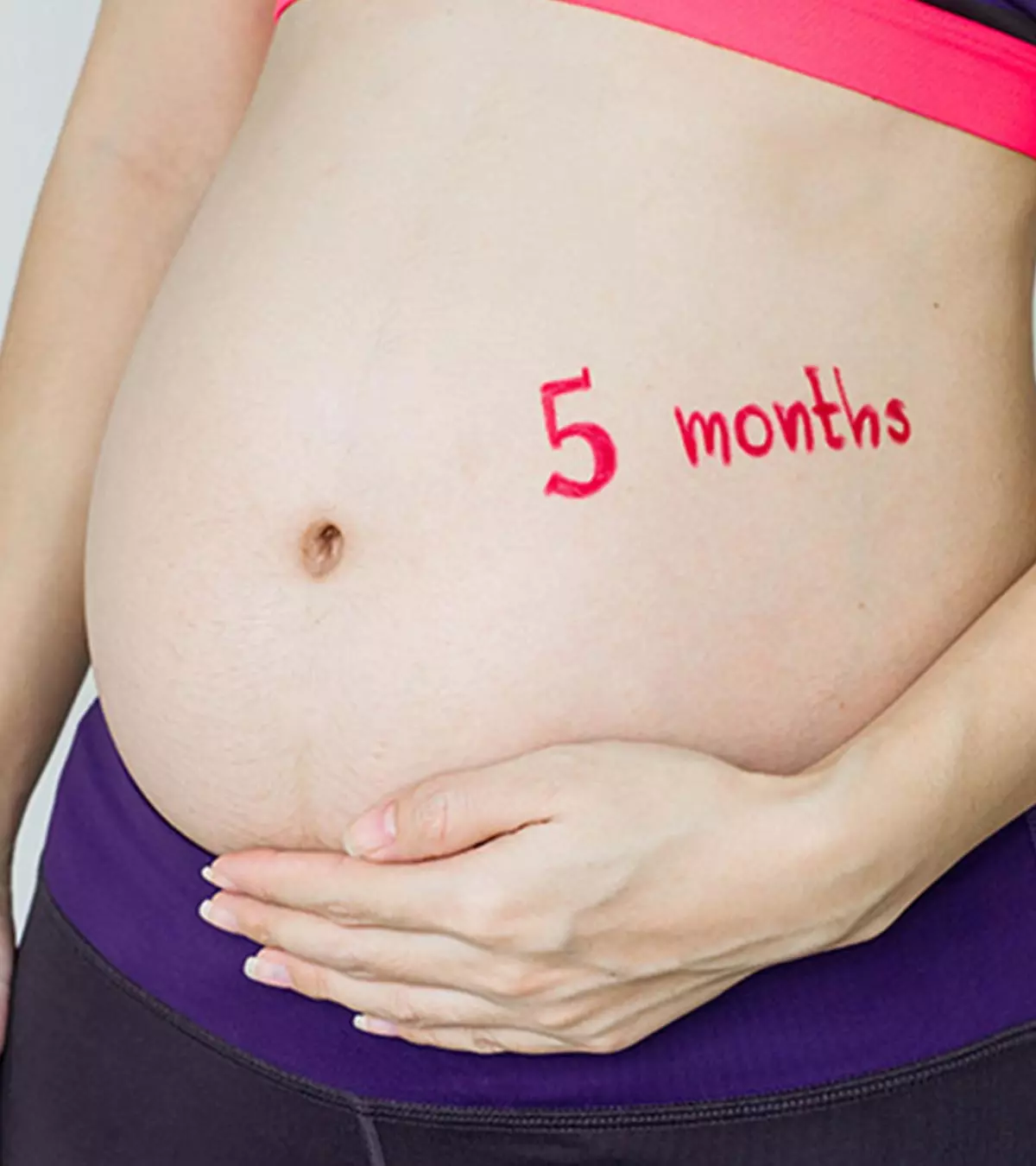
Image: Momjunction Design Team
If you have been pregnant for a while, you may want to determine how big is your baby inside your belly each passing day or week. This post will help you do so. A baby grows every day, and you can compare its growth to various fruits and vegetables of similar size to get a rough idea about the growth and understand the baby’s development. Although ultrasoundiA medical imaging technique that uses sound waves to create pictures of internal organs. s help you see your baby and ensure their well-being, they do not give a clear idea of the neonatal size. Read on to know about the week-by-week comparison of your baby’s size through fruits similar to its size.
Key Pointers
- An embryo may attain the size of a poppy seed by week four.
- It’s about the size of a lime by the end of the first trimester.
- As pregnancy progresses, the fetal size may increase, resembling an avocado, an heirloom tomato, a spaghetti squash, and a scallion by week 26.
- Your little munchkin may reach the size of a small pumpkin by the end of gestation.
Week-by-week Baby Size
As the pregnancy progresses, your baby grows in size. Here, we compare the baby’s size with that of fruit and provide a fetal weight estimation. This helps you visualize and understand fetal development week by week easily (1) (2) (3) (4) (5).
Each fruit comparison is based on the length and weight of the fetus during a specific week of pregnancy. Obstetric guidelines and ultrasound data provide insights into these measurements. Fetal biometry, including measurements such as head circumference (HC), abdominal circumference (AC), biparietal diameter (BPD), crown-rump length (CRL), and femur length (FL) are taken to determine the size of the fetus (6) (7) (8).
Weeks 1 to 3
The baby’s length is not measurable during this period. You may not even know that you are pregnant during this time.
Your days of pregnancy start from the first day of your last period. OvulationiA phase during the menstrual cycle where a mature egg releases from the ovary. takes place in week two, which means before that you are not pregnant, but the body is preparing for your pregnancy by forming the uterine lining. The egg gets fertilized during your ovulation and the fertilized egg implants in the next week, i.e., the third week of your pregnancy (9).
Week 4
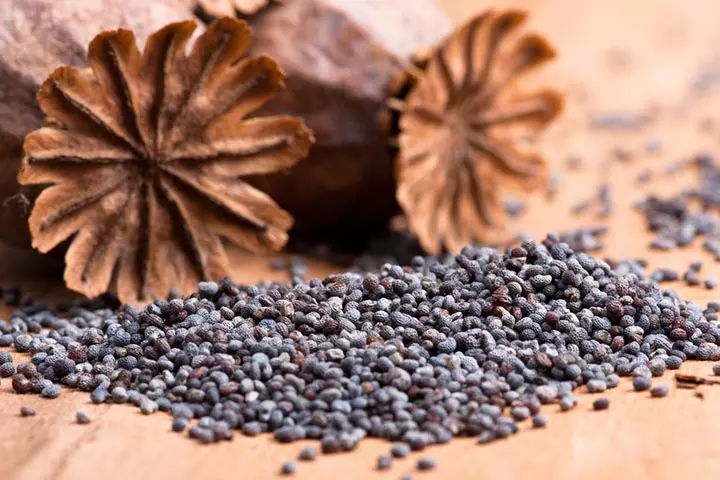
Your baby is an embryo and about the size of a poppy seed (10). The embryo is made of 32 cells, and is known as a morula. These separate into three distinct layers that further develop into a body structure (11). Nausea and indigestion are common this week.
Length: 0.1cm (0.04in)
Weight: Less than 1g (0.035oz)
Week 5
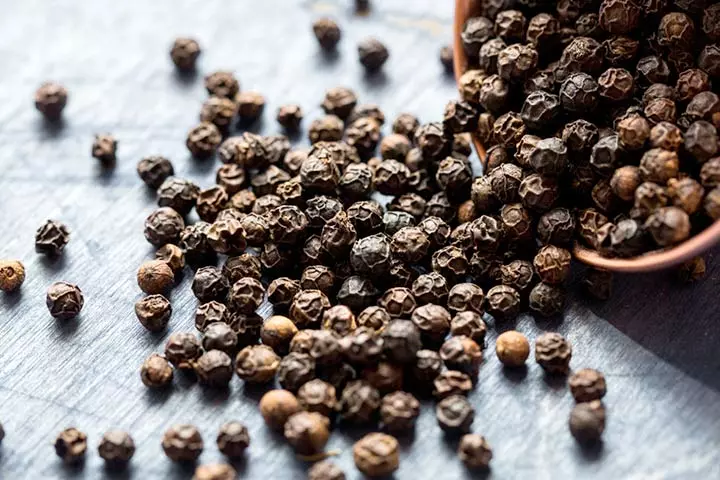
The baby’s size by week 5 is comparable to a peppercorn or sesame seed. You may start experiencing the early symptoms of pregnancy, such as breast tenderness, headaches, and morning sickness. Week 5 is the start of the “embryonic period,” when the baby’s main systems and structures start to form (12). The fetal development including the heart, spinal cord, brain, and blood vessels begins in the baby during this week (13).
Length: 0.1cm (0.04in)
Weight: Less than 1g (0.035oz)
Week 6
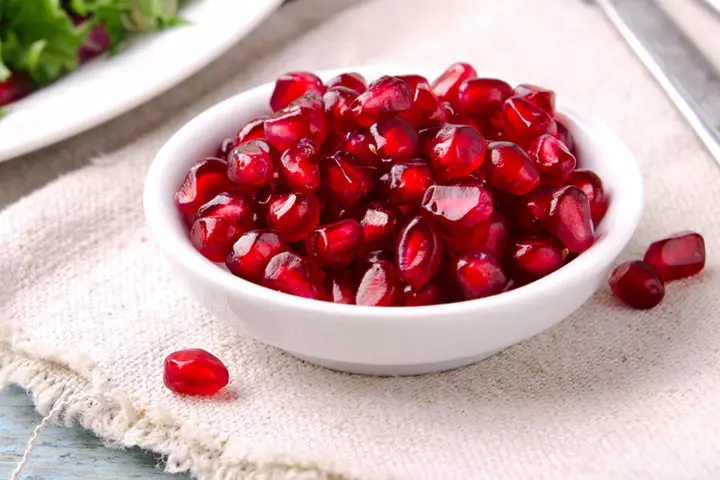
Your baby is about the size of a pomegranate seed or baked bean. By this week, your baby has leaped in size and is well protected by the amniotic saciThe thin-walled fluid-filled sac in the uterus where the embryo grows and eventually forms the fetus. . An ultrasound helps you listen to the first sign of life — your baby’s heartbeat. Kidneys and the liver also start developing. For expectant mothers, mood swings, sore breasts, and aversion to food and smells are common in this week (12).
Length: Around 1cm (0.4in)
Weight: Less than 1g (0.035oz)
Week 7
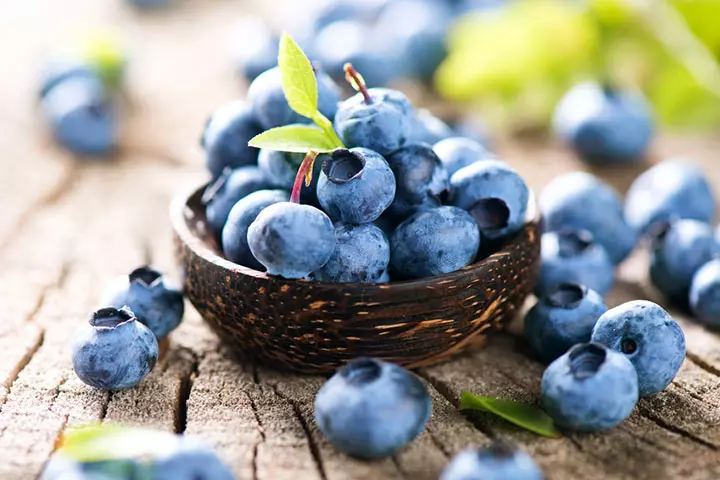
Your baby’s size has almost doubled and is as big as a blueberry (15). By this week, the arm buds develop. Pregnancy symptoms such as nausea and stomach upset persist. Sore breasts and frequent urination are other symptoms (16).
Length: Around 1cm (0.4in)
Weight: Less than 1g (0.035oz)
 Did you know?
Did you know?Week 8

By this week, your baby is taking a human shape and is about the size of a cranberry bean. The baby constantly moves inside the womb, though the tiny movements may not be felt prominently. The intestine starts forming and fingers and toes appear webbed (17). You may feel lethargic.
Length: 1.6cm (measured from crown to rump) (0.62in)
Weight: 1g (0.035oz)
Week 9
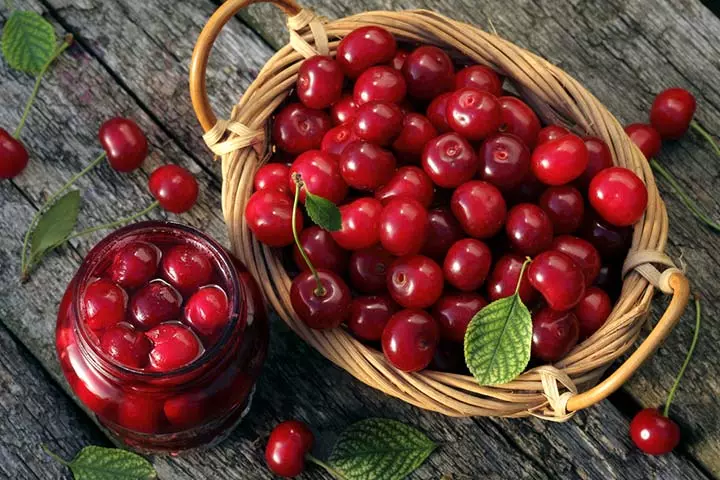
As big as a cherry, your baby has now transformed into a fetus from an embryo. The hands of the baby take a structure by this week. The digestive tract and genitals are in place. Mood swings and morning sickness may persist in you (18).
Length: 2.3cm (0.9in)
Weight: 2g (0.07oz)
Week 10

By now, your baby is about the size of a kumquat. The eyes are developing with the formation of eyelids (19). Your appetite might increase around this time, therefore requiring due consideration for optimum maternal nutrition.
Length: 3.1cm (1.22in)
Weight: 4g (0.14oz)
Week 11
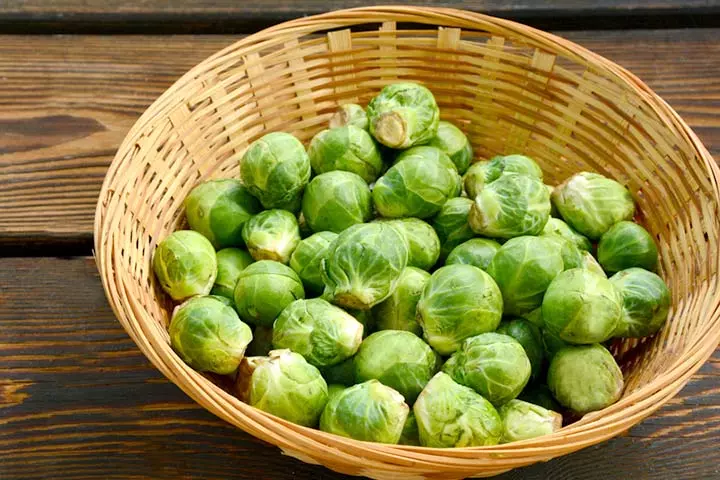
Your baby is about the size of a Brussels sprout now. The baby’s fingernails begin to grow (20). Your nausea may begin to reduce by this week.
Length: 4.1cm (1.61in)
Weight: 7g (0.25oz)
Week 12
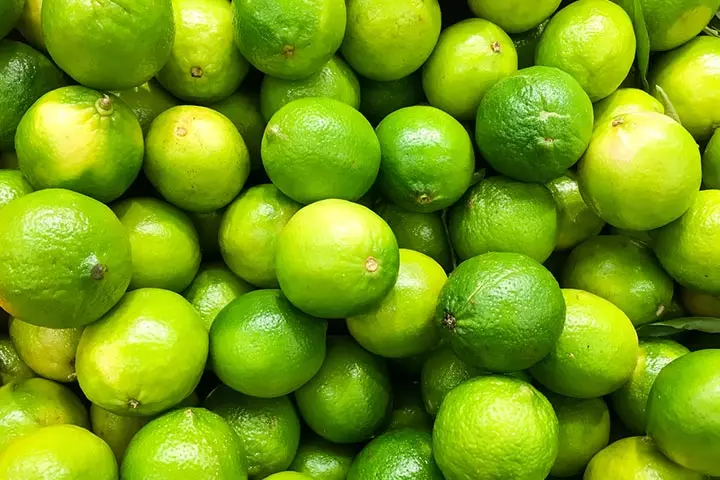
Your baby is about the size of a lime. The skeletal structure is in place by this week (21). You will have low energy due to hormonal changes.
Brianna Lovell Myers, an expecting mother, describes her baby’s size at 12 weeks of pregnancy in a unique way. She writes, “Today, I am 12 weeks into my pregnancy. Baby Myers is about the size of a lime (or for you movie nerds in the audience, about the size of that lump of amber with the mosquito in it, in Jurassic Park) (i).”
Length: 5.4cm (2.13in)
Weight: 14g (0.5oz)
Week 13

Your baby has grown as long as a pea pod by now. Your frequency of urination increases and so is the risk of dehydration. Drink plenty of water to keep yourself hydrated (22).
Length: 7.4cm (2.91in)
Weight: 23g (0.81oz)
 Quick Tip
Quick TipWeek 14

You enter the second trimester and the baby is as big as a lemon by this week. All the internal organs formed will start maturing from this week. The windpipe, vocal cord, esophagusiA muscular tube that passes food and liquids from the mouth to the stomach. and larynxiA part of the respiratory system that helps create sounds and is also called a voice box. begin to form. The baby can bring their hands to their mouth (23). Your baby bump is visible now.
Length: 8.7cm (3.42in)
Weight: 43g (1.15oz)
Week 15
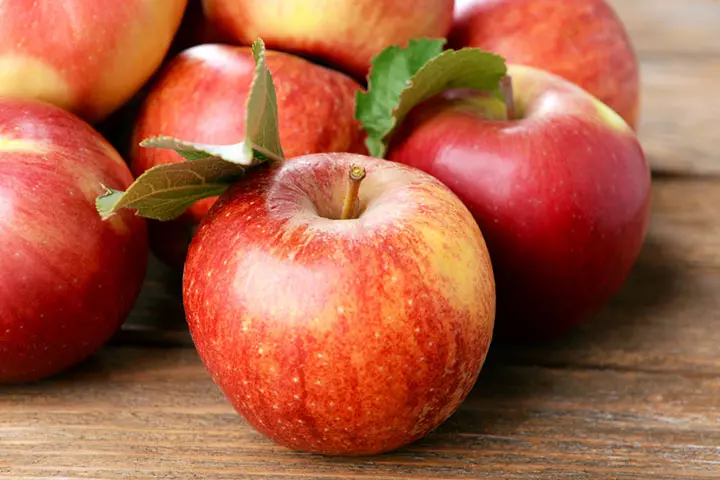
By this week your baby has grown as big as an apple and has picked the momentum of growth. LanugoiSoft, thin hair that covers the fetus in utero and is shed soon after birth. starts developing on the baby’s body to protect the skin (24). You might experience an appetite increase and heart palpitationsiIrregular heartbeat sensations that feel like your heart is fluttering or skipping beats. .
Length: 10.1cm (3.98in)
Weight: 70g (2.47oz)
Week 16
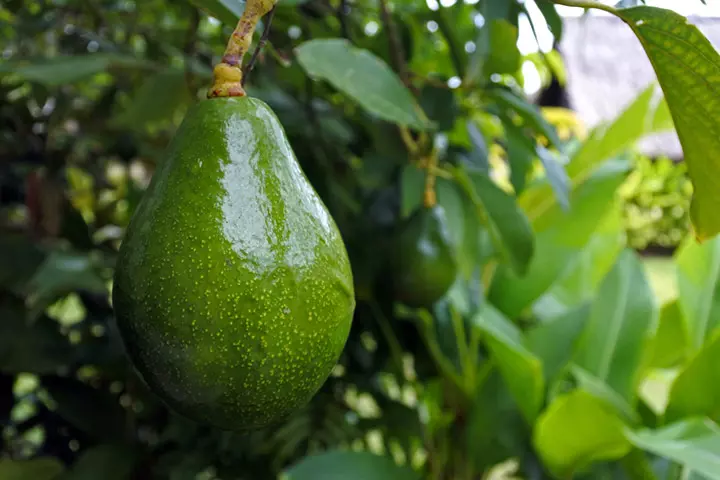
Your baby has now grown around the size of an avocado. Muscles are strengthening by this week and the baby’s movements can be felt. They have started making facial expressions, but the movements are still random (25). Your naval lines become visible by this week.
Length: 11.6cm (4.57in)
Weight: 100g (3.53oz)
Week 17
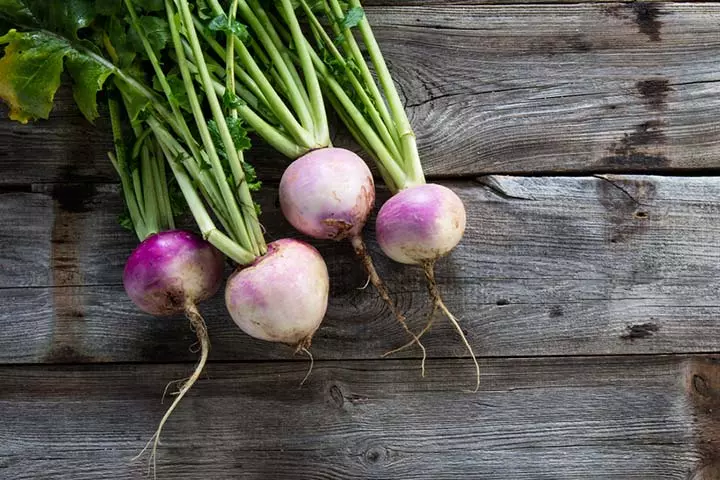
By this week, your baby is as big as a turnip. The reproductive system — the uterus and vagina in girls and the penis in boys – begins to take shape this week. Your baby might have hiccupped before, but you might feel it for the first time now. Additionally, your baby’s fingernails are beginning to form, and their tiny fingerprints are developing (26). You might have excessive sweating, increased vaginal discharge, and constipation.
Length: 13cm (5.11in)
Weight: 140g (4.93oz)
Week 18
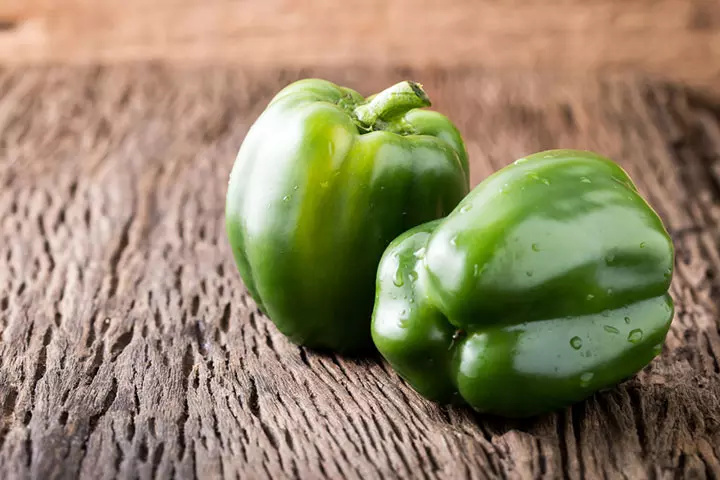
So, now your baby is as big as a bell pepper. The large intestine and digestive glands are forming by this week. Baby kicks are more distinct. You may experience stomach pain due to constipation, gas, or stretching ligaments (27).
Length: 14.2cm (5.59in)
Weight: 190g (6.70oz)
Week 19
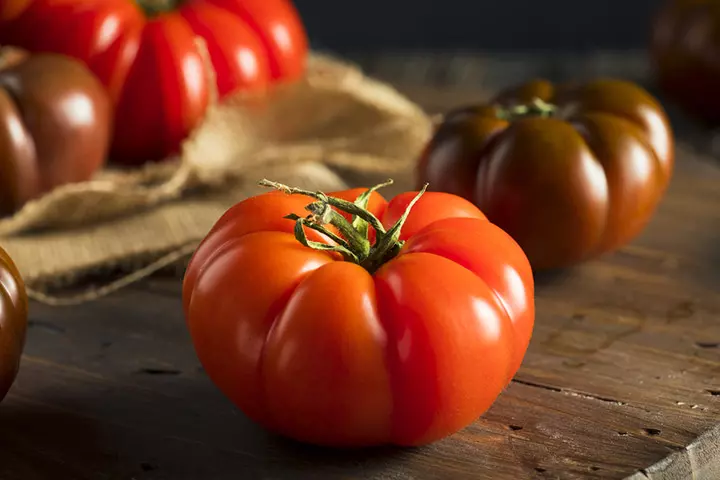
Your baby has grown the size of an heirloom tomato. A waxy substance called vernix caseosa starts forming over the baby’s skin (28). You might begin to gain weight and have a backache by this week.
Length: 15.3cm (6.02in)
Weight: 240g (8.47oz)
Week 20
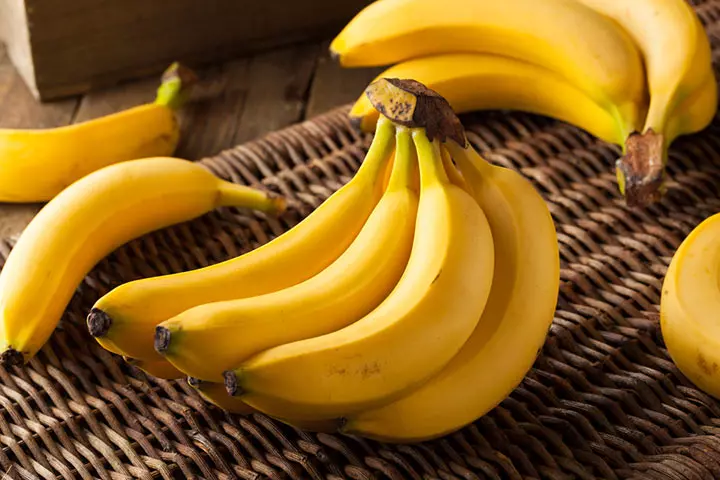
This week your baby is as long as a small banana. The genitalia is visible. The baby is measured from head to heel from this week onwards. Baby movements become more prominent. You may start gaining more weight (29).
Length: 25.6cm (measured from head to heel) (10.08in)
Weight: 300g (10.58oz)
Week 21
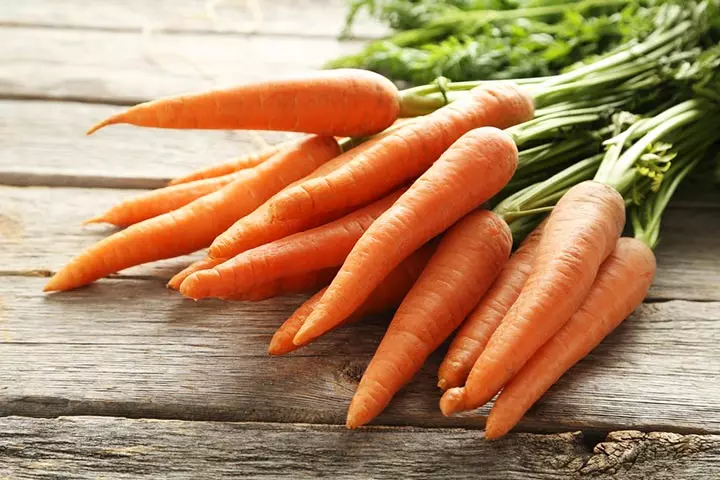
Your baby is as long as a carrot by now. The baby’s subtle movements can be felt. You will have a substantial weight gain. You might also notice an increase in your appetite (30).
Length: 26.7cm (10.51in)
Weight: 360g (12.69oz)
Week 22

Your baby is about the size of a spaghetti squash. The eyelids and eyebrows are almost developed by this time. Your mood swings begin to wane (31).
Length: 27.8cm (10.94in)
Weight: 430g (15.17oz)
 Quick Tip
Quick TipWeek 23
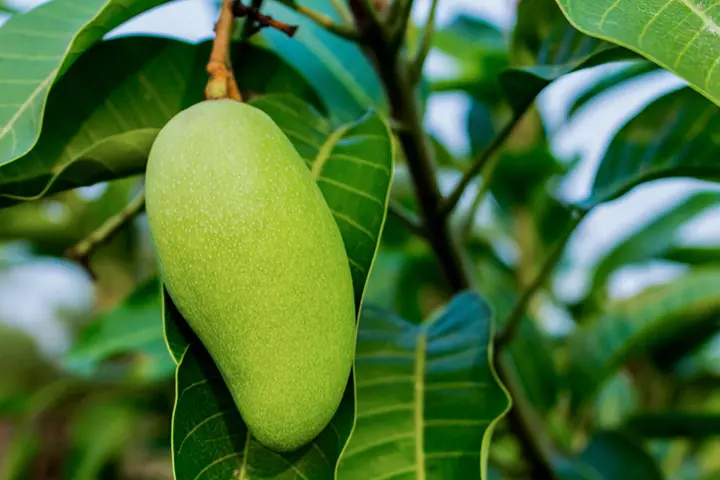
By now, your baby measures up to a large mango. The baby’s hearing ability is developing. The pancreasiAn organ that produces digestive juices and important hormones. is now active and has started producing insuliniA hormone (organic substance) produced by the pancreas that helps control blood sugar levels. (32). You will continue to experience frequent urination and fatigue.
Length: 28.9cm (11.38in)
Weight: 501g (1.1lb)
Week 24
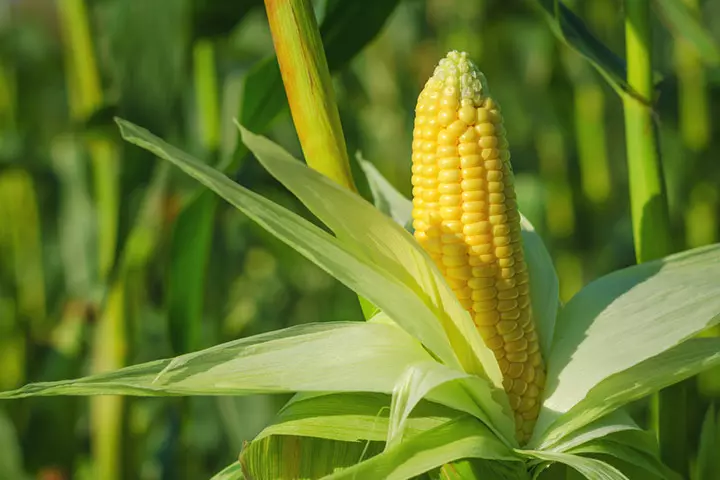
Your baby is now as long as an ear of a corn and has almost attained a human look. The skin is translucent and the blood vessels and internal organs are clearly visible. Sleep disturbance and feeling low in energy are the pregnancy symptoms this week (33).
Length: 30cm (11.8in)
Weight: 600g (1.32lb)
Week 25

Your baby is around the size of a rutabaga. The brain is developing a complex structure. Your uterus gets stretched and causes discomfort. You may also experience swelling in your face and limbs (34).
Length: 34.6cm (13.62in)
Weight: 660g (1.46lb)
Week 26
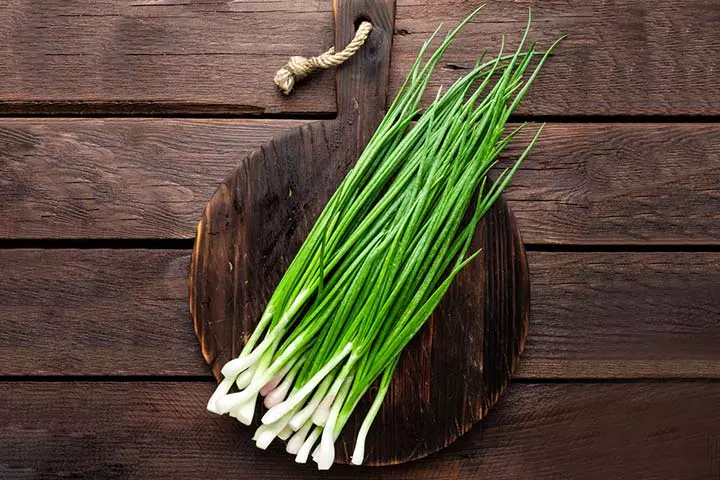
Your baby is as big as a scallion. The nostrils are opening up and the baby starts to practice breathing. Eyelids begin to open and the brain starts functioning actively. Joint and back pains are the pregnancy symptoms this week (35).
Length: 35.6cm (14.01in)
Weight: 760g (1.68lb)
Week 27
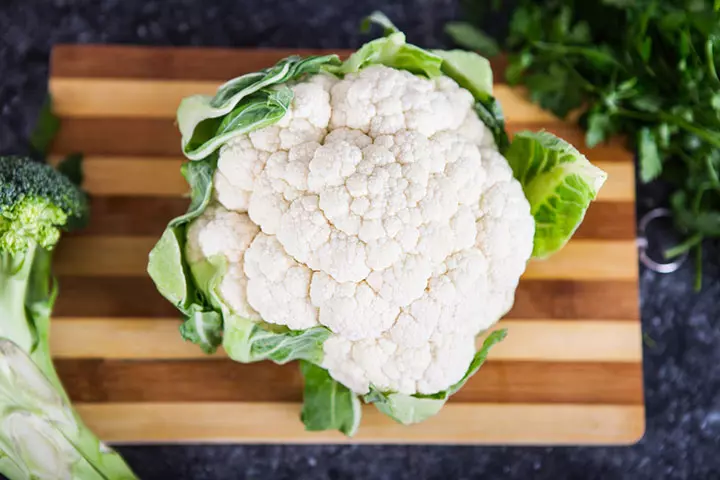
By this time, your baby is as big and heavy as the head of a cauliflower.
Your baby’s lungs are now developed enough to support breathing. Feeling tired and an increased urge to pee are pregnancy symptoms. You may also experience bloating and constipation (36).
Length: 36.6cm (14.41in)
Weight: 875g (1.93lb)
Week 28
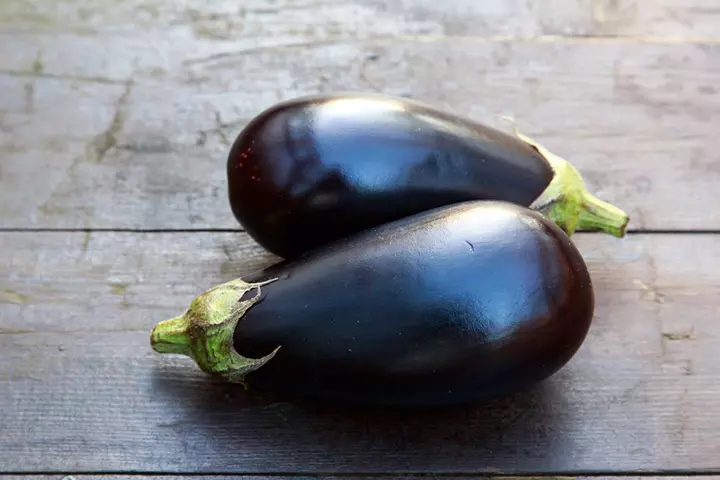
Your baby is about the size of a big eggplant and is close to its weight. Lungs start developing with more complex structures. This helps circulate oxygen throughout the baby’s blood vessels. By this week, your uterus stretches further. Your joints and ligaments may also become more flexible than usual (37).
Length: 37.6cm (14.80in)
Weight: 1kg (2.21lb)
Week 29
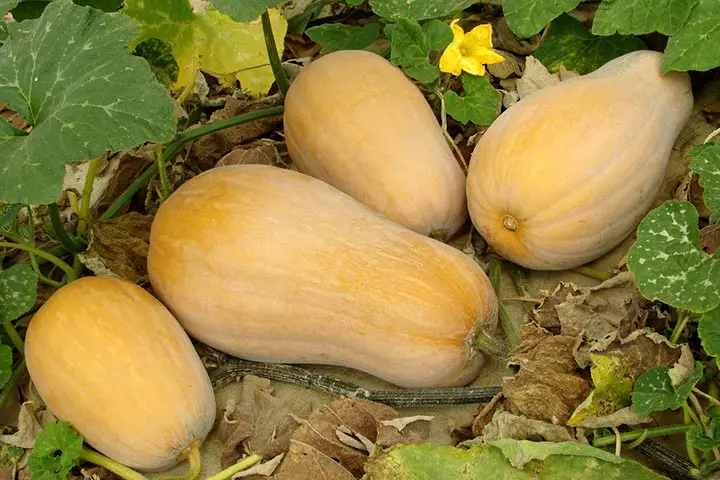
By this week, your baby is around the size of a butternut squash. The brain starts regulating the body temperature of the baby. The baby begins to gain weight with fat deposition under the skin. Their bone marrow is now producing red blood cells (38). Your back pain might increase due to the extra weight and leg cramps occur more often.
Length: 38.6cm (15.19in)
Weight: 1.15kg (2.54lb)
Week 30
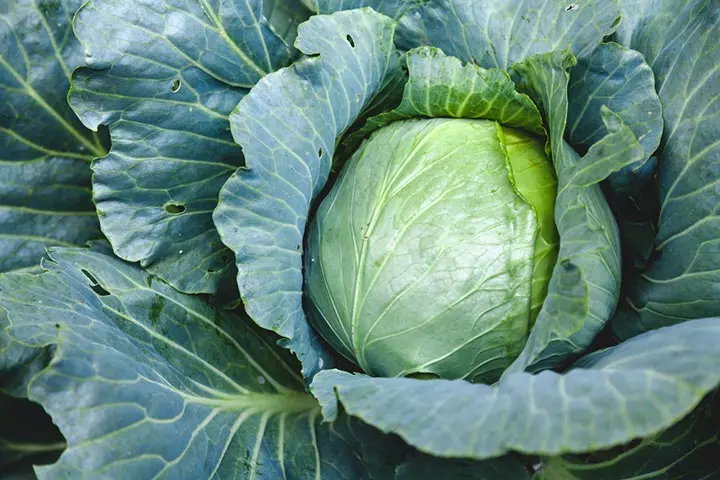
Now, your baby grows into the size of a large cabbage. Your baby’s bones start hardening by this week. Some babies are able to suck their thumbs at this point (39). You may feel shortness of breath as the stomach is pushed towards the diaphragm.
Length: 39.9cm (15.71in)
Weight: 1.32kg (2.91lb)
Week 31
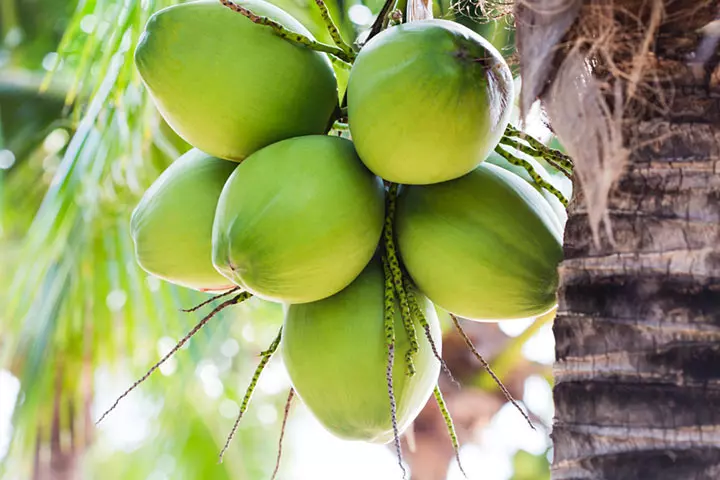
By now, your baby has attained the size of a coconut. The movements become more organized. You might sweat excessively. For some women, the breasts might already be producing colostrum, the nutrient-rich first milk (40).
Length: 41.1cm (16.18in)
Weight: 1.5kg (3.31lb)
Week 32
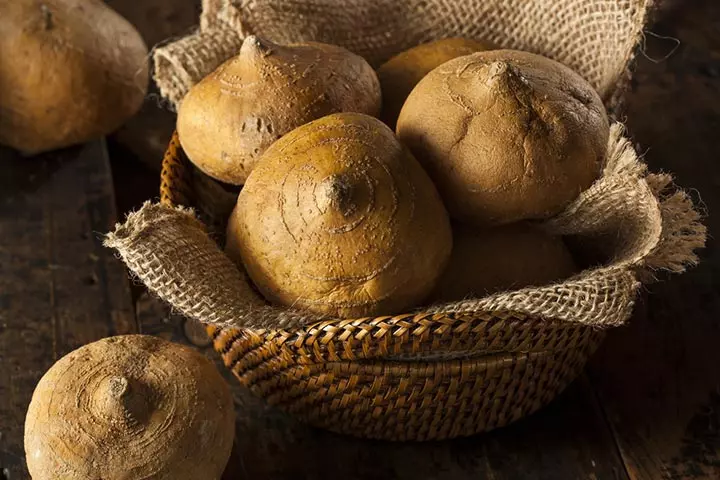
Your baby now attains the size of a jicama. The baby starts moving to the head-down position (41). Your hands, face and legs might begin to swell.
Length: 42.4cm (16.69in)
Weight: 1.7kg (3.75lb)
Week 33
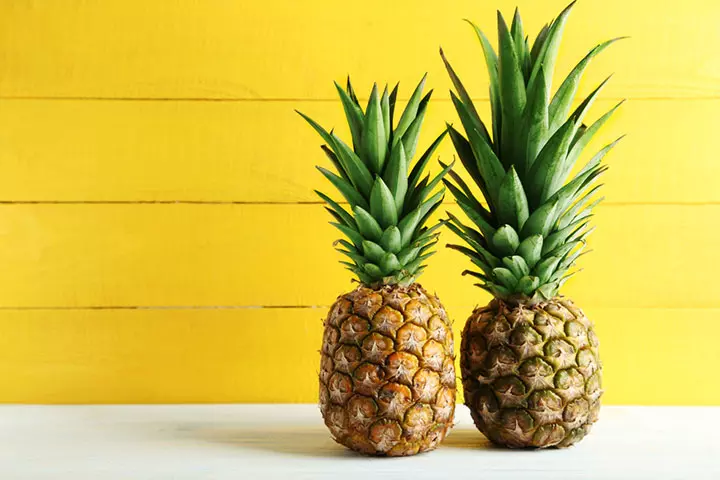
Your baby is almost the size of a pineapple by this time. The baby’s skills and reflexes are developing. The baby’s brain and nervous system have now fully formed and are functioning (42). You will gain more weight.
Length: 43.7cm (17.20in)
Weight: 1.9kg (4.23lb)
Week 34
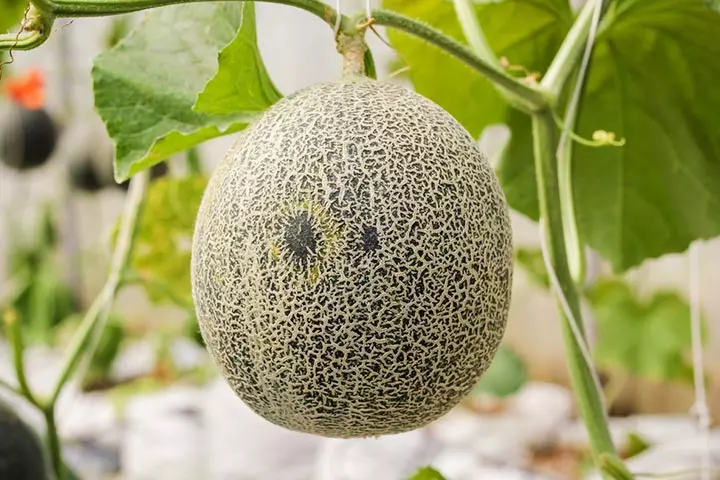
Your baby is about the size of a cantaloupe melon. The baby’s optical structure is complete. Your breasts start oozing out colostrumiThick, yellowish, nutrient-rich first milk produced by a mother. (43).
Length: 45cm (17.71in)
Weight: 2.1kg (4.73lb)
 Quick Tip
Quick TipWeek 35
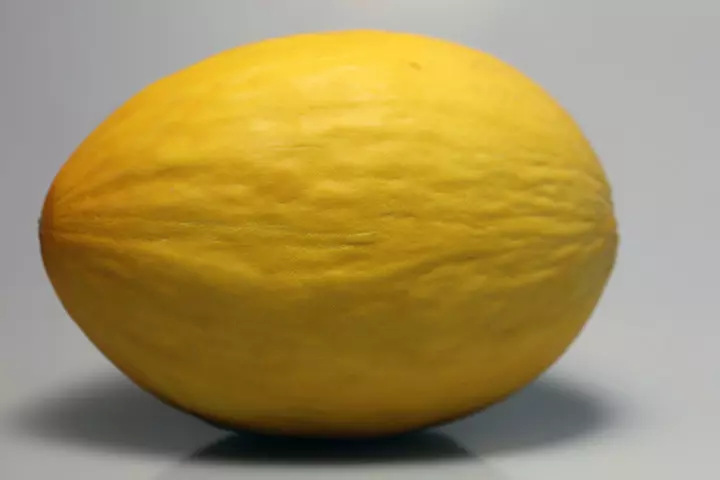
Your baby is as big and heavy as a honeydew melon. Babies may turn and be in vertex positioniThe head-down position a baby in preparation for a vaginal birth. by this week (44). You will have painful swelling of feet and hands.
Length: 46.2cm (18.19in)
Weight: 2.3kg (5.25lb)
Week 36
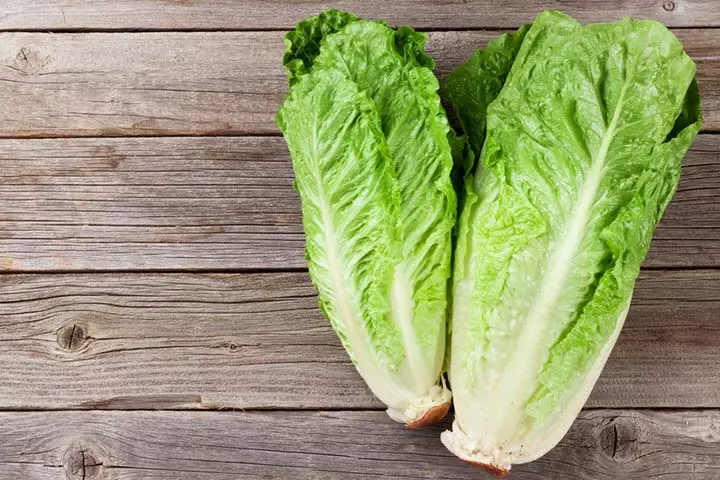
Your baby this week is close to the size of a romaine lettuce. Here onwards, your baby starts gaining around 1oz per day (45). The skull is not fused as it overlaps while the baby makes its way through the birthing canal. The position of the baby can be felt down in the abdomen.
Length: 47.4cm (18.66in)
Weight: 2.6kg (5.78lb)
Week 37
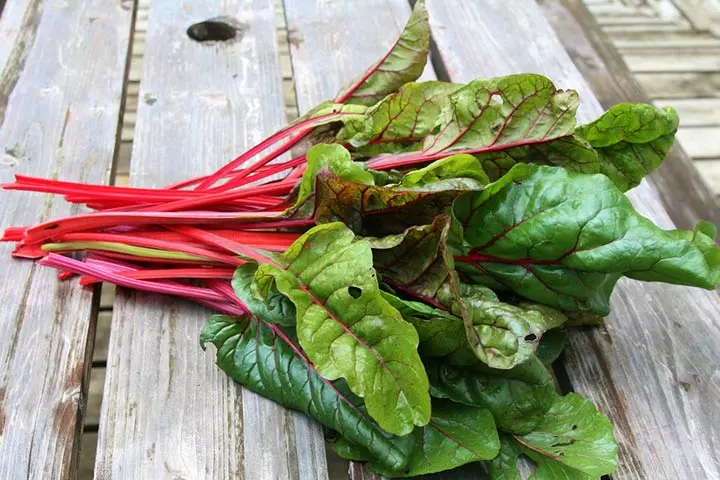
Your baby is now as long as a stalk of Swiss chard. The fetal movements are reduced due to insufficient space inside the womb. Fat starts depositing under the skin to regulate the body temperature and maintain the blood sugar level of the baby. You may notice colostrum leaks often by this week (46).
Length: 48.6cm (19.13in)
Weight: 2.9kg (6.30lb)
Week 38

Your baby is about the length of a leek. The baby starts shedding the lanugo and is ready for birthing, as you approach your due date. You can feel uterine contractions during this week (47).
Length: 49.8cm (19.61in)
Weight: 3kg (6.80lb)
Week 39
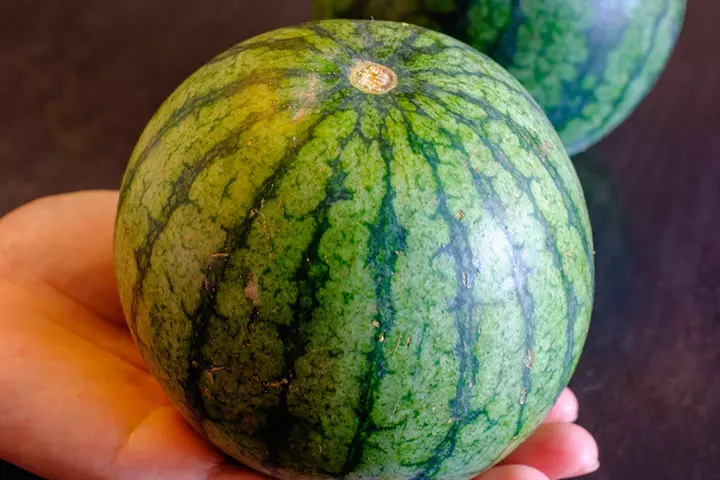
As big as a mini-watermelon, your baby is about to hit full-term. The lungs continue to develop several air sacs to help the baby take its first breath after birth. Your frequency of contractions increases and the cervix becomes smoother and softer (48).
Length: 50.7cm (19.96in)
Weight: 3.3kg (7.25lb)
Week 40
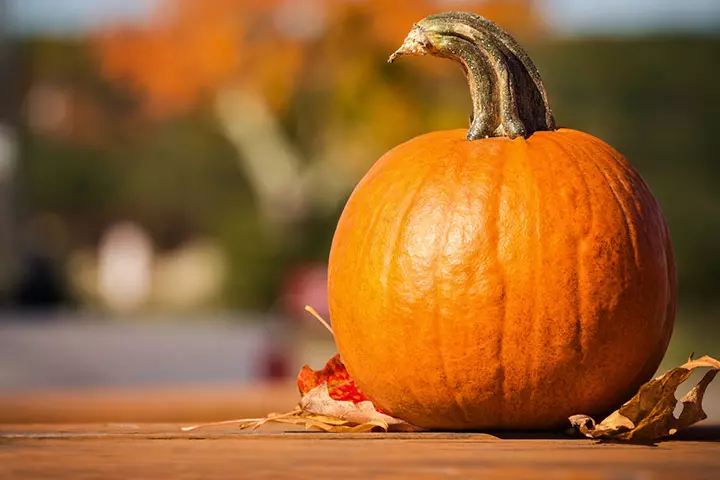
Your baby is now about the size of a small pumpkin. Around 15% of the baby’s body is fat which helps it stay warm after birth. Your labor can start any time now (49).
Length: 51.2cm (20.16in)
Weight: 3.4kg (7.63lb)
 Quick tip
Quick tipFrequently Asked Questions
1. Can the size of the baby in the womb affect delivery?
A large baby might not fit through the birth canal and cause a long and difficult birthing process, which may result in injuries to the baby or require a c-section (51). Similarly, a small baby may also experience delivery complications, such as insufficient oxygen and blood flow (52).
2. Is it possible for a baby to be larger or smaller than average in the womb?
A baby’s size is determined by several factors, including gestational growth, hereditary, (such as the parents’ height and maternal weight), and nutrition during pregnancy (10) (52).
3. What is fundal height measurement, and how is it used to determine the size of the baby in the womb?
Fundal height is the measurement of the distance from the pubic bone to the uterus’s top, which can vary from person to person. A smaller fundal height than normal indicates slow fetal growth and low amniotic fluid levels, while a larger than expected indicates a large baby with or without adequate amniotic fluid. However, both conditions require medical observation (53).
Comparing the fetal size with fruits is a good way to describe ‘how big is your baby.’ The growing fetus attains measurable size after four weeks when it is comparable to poppy seeds and may become as big as a blueberry by seven weeks. Your baby usually becomes the size of a lemon by the end of the first trimester, a corn cob by the end of the second trimester, and the size of a small pumpkin before birth. It is interesting when some fruits and vegetables remind you of the baby inside. However, each baby is unique and may differ from what is described here.
Infographic: Fetal Development Comparison With Fruits
Although you may start to feel the pregnancy baby bump during your second trimester, the fetus starts developing in the womb from the first month only and grows bigger with each passing week. So, if you’re curious to know more about the fetus’ growth, go through our infographic below, where we’ve provided an easy comparison of a baby’s growth at notable weeks with comparison to fruits for easier understanding.

Illustration: Momjunction Design Team
Personal Experience: Source
MomJunction articles include first-hand experiences to provide you with better insights through real-life narratives. Here are the sources of personal accounts referenced in this article.
i. The first trimester.https://medium.com/@bri.lovell.myers/the-first-trimester-55a8ef556f78
References
- Fetal Development.
https://embryology.med.unsw.edu.au/embryology/index.php/Fetal_Development - Pregnancy – week by week.
https://www.betterhealth.vic.gov.au/health/healthyliving/pregnancy-week-by-week - Fetal development.
https://www.mountsinai.org/health-library/special-topic/fetal-development - Pregnancy Timeline: Week by Week.
https://www.nyp.org/womens/pregnancy-and-birth/timeline#collapse-1736312008-614756205 - Fetal Growth Chart.
https://babyyourbaby.org/pregnancy/during-pregnancy/fetal-chart/ - Pam Loughna et.al; (2009); Fetal size and dating: charts recommended for clinical obstetric practice.
https://www.bmus.org/static/uploads/resources/Aug_2009_Fetal_Measurements_D3NApK5.pdf - Ultrasound scan—fetal growth scan.
https://brochures.mater.org.au/brochures/mater-mothers-hospital/ultrasound-scan-fetal-growth-scan - Fetal Biometry.
https://my.clevelandclinic.org/health/diagnostics/25087-fetal-biometry - You and your pregnancy at 1 to 3 weeks.
https://www.nhs.uk/pregnancy/week-by-week/1-to-12/1-2-3-weeks/ - Fetal Development.
https://my.clevelandclinic.org/health/articles/7247-fetal-development-stages-of-growth - Scientific findings from and uses of embryo research.
https://www.leopoldina.org/en/topics/embryo-research/scientific-findings-and-uses/ - Fetal development.
https://medlineplus.gov/ency/article/002398.htm - Week 5.
https://www.nhs.uk/start-for-life/pregnancy/week-by-week-guide-to-pregnancy/1st-trimester/week-5/ - Week 6.
https://www.nhs.uk/start-for-life/pregnancy/week-by-week-guide-to-pregnancy/1st-trimester/week-6/ - Pregnancy: What to Expect in Your First Trimester (Weeks 1-12).
https://www.unitypoint.org/news-and-articles/pregnancy-by-week-first-trimester - Week 7.
https://www.nhs.uk/start-for-life/pregnancy/week-by-week-guide-to-pregnancy/1st-trimester/week-7/ - The first prenatal visit.
https://www.beaumont.org/conditions/pregnancy-first-trimester - 9 weeks pregnant
https://raisingchildren.net.au/pregnancy/week-by-week/first-trimester/9-weeks - Fetal development.
https://www.mountsinai.org/health-library/special-topic/fetal-development - Week 11.
https://www.nhs.uk/start-for-life/pregnancy/week-by-week-guide-to-pregnancy/1st-trimester/week-11/ - Week 12.
https://www.nhs.uk/start-for-life/pregnancy/week-by-week-guide-to-pregnancy/1st-trimester/week-12/ - Week 13.
https://www.nhs.uk/start-for-life/pregnancy/week-by-week-guide-to-pregnancy/2nd-trimester/week-13/ - Week 14.
https://www.marchofdimes.org/pregnancy-week-week#14 - Week 15.
https://www.nhs.uk/start-for-life/pregnancy/week-by-week-guide-to-pregnancy/2nd-trimester/week-15/ - Week 16.
https://www.nhs.uk/start-for-life/pregnancy/week-by-week-guide-to-pregnancy/2nd-trimester/week-16/ - Week 17.
https://www.nhs.uk/start-for-life/pregnancy/week-by-week-guide-to-pregnancy/2nd-trimester/week-17/ - You and your baby at 18 weeks pregnant.
https://www.nhs.uk/pregnancy/week-by-week/13-to-27/18-weeks/ - You at 19 weeks pregnant.
https://raisingchildren.net.au/pregnancy/week-by-week/second-trimester/19-weeks - 20 Weeks Pregnant.
https://americanpregnancy.org/healthy-pregnancy/week-by-week/20-weeks-pregnant/ - You and your baby at 21 weeks pregnant.
https://www.nhs.uk/pregnancy/week-by-week/13-to-27/21-weeks/ - You and your baby at 22 weeks pregnant.
https://www.nhs.uk/pregnancy/week-by-week/13-to-27/22-weeks/ - 23 weeks pregnant.
https://raisingchildren.net.au/pregnancy/week-by-week/second-trimester/23-weeks - Week 24.
https://www.nhs.uk/start-for-life/pregnancy/week-by-week-guide-to-pregnancy/2nd-trimester/week-24/ - Week 25.
https://www.nhs.uk/start-for-life/pregnancy/week-by-week-guide-to-pregnancy/2nd-trimester/week-25/ - Week 26.
https://www.nhs.uk/start-for-life/pregnancy/week-by-week-guide-to-pregnancy/2nd-trimester/week-26/ - Week 27.
https://www.nhs.uk/start-for-life/pregnancy/week-by-week-guide-to-pregnancy/2nd-trimester/week-27/ - Week 28.
https://www.nhs.uk/start-for-life/pregnancy/week-by-week-guide-to-pregnancy/3rd-trimester/week-28/ - Pregnancy at week 29.
https://www.pregnancybirthbaby.org.au/pregnancy-at-week-29 - 30 weeks pregnant.
https://raisingchildren.net.au/pregnancy/week-by-week/third-trimester/30-weeks - Pregnancy Calendar: Week 31.
https://kidshealth.org/en/parents/week31.html - Week 32.
https://www.nhs.uk/start-for-life/pregnancy/week-by-week-guide-to-pregnancy/3rd-trimester/week-32/ - Week 33.
https://www.nhs.uk/start-for-life/pregnancy/week-by-week-guide-to-pregnancy/3rd-trimester/week-33/ - Week 34.
https://www.nhs.uk/start-for-life/pregnancy/week-by-week-guide-to-pregnancy/3rd-trimester/week-34/ - Vertex Presentation.
https://my.clevelandclinic.org/health/articles/24999-vertex-presentation - Your growing baby.
https://www.allinahealth.org/health-conditions-and-treatments/health-library/patient-education/beginnings/third-trimester/whats-happening/your-growing-baby - Week 37.
https://www.nhs.uk/start-for-life/pregnancy/week-by-week-guide-to-pregnancy/3rd-trimester/week-37/ - Week 38.
https://www.nhs.uk/start-for-life/pregnancy/week-by-week-guide-to-pregnancy/3rd-trimester/week-38/ - Week 39.
https://www.nhs.uk/start-for-life/pregnancy/week-by-week-guide-to-pregnancy/3rd-trimester/week-39/ - Baby Fat Is About More Than Cuteness.
https://www.sapiens.org/biology/baby-fat-is-about-more-than-cuteness/ - You and your baby at 41 weeks pregnant.
https://www.nhs.uk/pregnancy/week-by-week/28-to-40-plus/41-weeks/ - Large for Gestational Age
https://www.urmc.rochester.edu/encyclopedia/content?ContentTypeID=90&ContentID=P02383 - Small for Gestational Age
https://www.urmc.rochester.edu/encyclopedia/content?ContentTypeID=90&ContentID=P02411 - Anatomy of pregnancy and birth – uterus
https://www.pregnancybirthbaby.org.au/anatomy-of-pregnancy-and-birth-uterus
Community Experiences
Join the conversation and become a part of our nurturing community! Share your stories, experiences, and insights to connect with fellow parents.
Read full bio of Dr. Shalini MA
Read full bio of shreeja pillai
Read full bio of Rebecca Malachi
Read full bio of Aneesha Amonz










